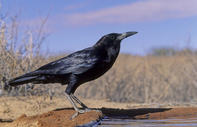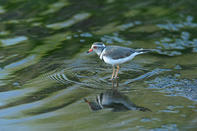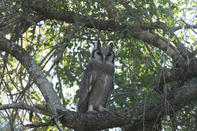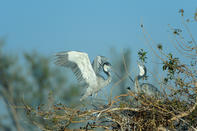One of the criteria that help ornithologists divide the bird kingdom into different groups is the condition of their young when they hatch. Chicks will either be altricial or precocial at birth.
Passerines

Altricial chicks are those that are born naked, blind and unable to move around. Usually, it is the passerines (or perching birds that have a foot structure of three toes forward, one back) that produce these kinds of chicks.
Passerines are usually birds that nest in trees or holes and these structures in their diversity of forms provide shelter for the chicks that need warmth and protection while they develop through a protracted nesting period.
Altricial chicks need to be supported, fed and kept warm by the parent birds. Passerines are generally small birds, the largest of the group being the crows.
Non Passerines

Precocial chicks are those that are born with a downy covering, their eyes are open and within a short space of time (usually as soon as their plumage dries) they can move around and even swim. Usually, ground or water dwelling birds (non-passerines) produce precocial young.
It is vital for the young of such birds to be able to escape danger from the minute they hatch as their rudimentary nests are on the ground and vulnerable to myriad predators. In order for them to hatch more advanced than altricial birds, precocial species incubate their eggs for longer.
Since they are more developed at birth, they are better able to regulate their body heat and don’t need to rely on a parent bird to keep them warm. They set to the task of finding food almost immediately.
Near Passerines

There is an intermediate group of birds known as near-passerines that produce altricial young in nests but do not have feet modified for perching but rather for clinging or other functions. Such feet are usually zygodactylous or syndactylous.
A zygodactylous foot has two toes facing forward and two backwards. This allows birds such as woodpeckers, wood-hoopoes and mousebirds to cling to the upright branches of trees while foraging for food. Owls have a toe that may either face forward or backwards depending on the grip required when hunting. A syndactylous foot has the second and third toe fused such as in kingfishers and hornbills.
Raptors

Raptors do not fit neatly into any of the groups since their young hatch with their eyes open and covered in down feathers but are still helpless to a large degree being reliant on the parents for food and bound to the nest for safety. This is considered semi-altricial. Other birds that are semi-altricial are herons and egrets.
By Megan Emmet